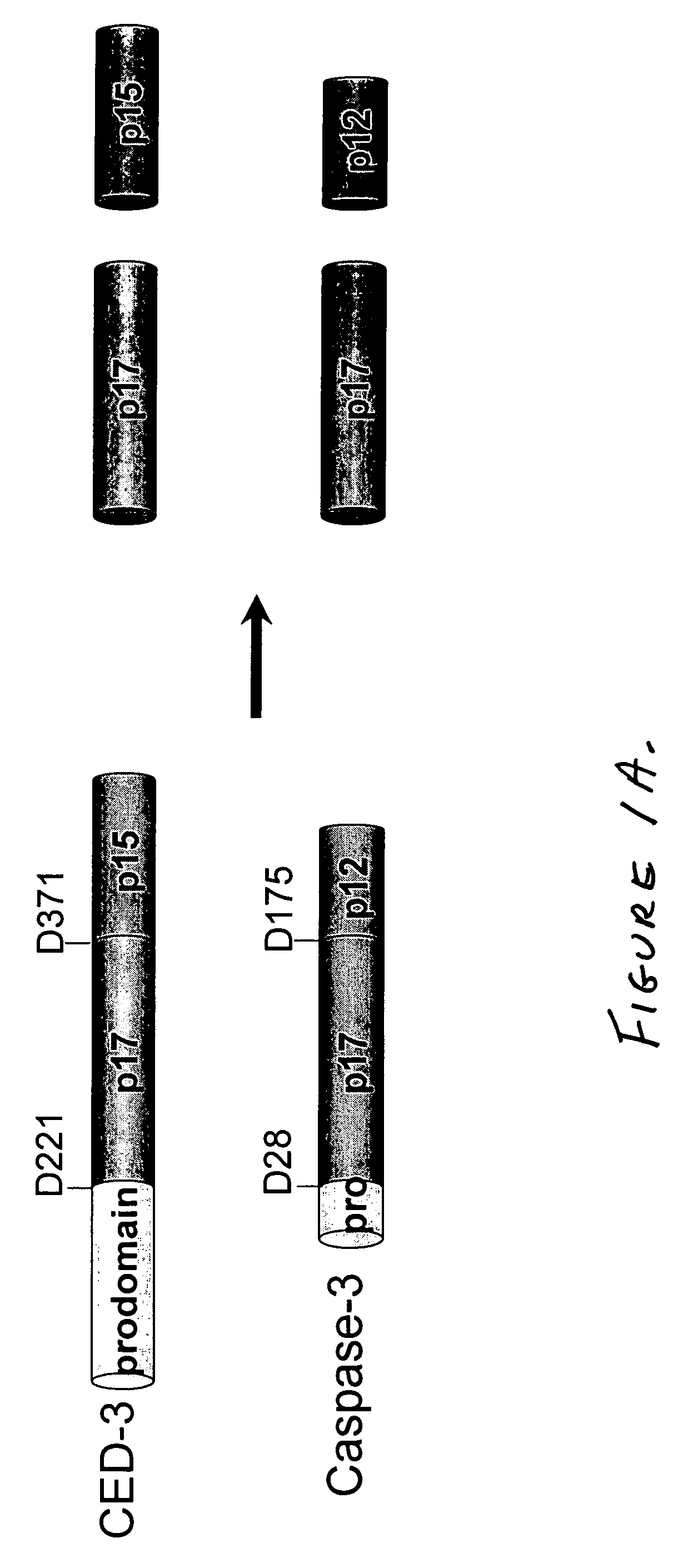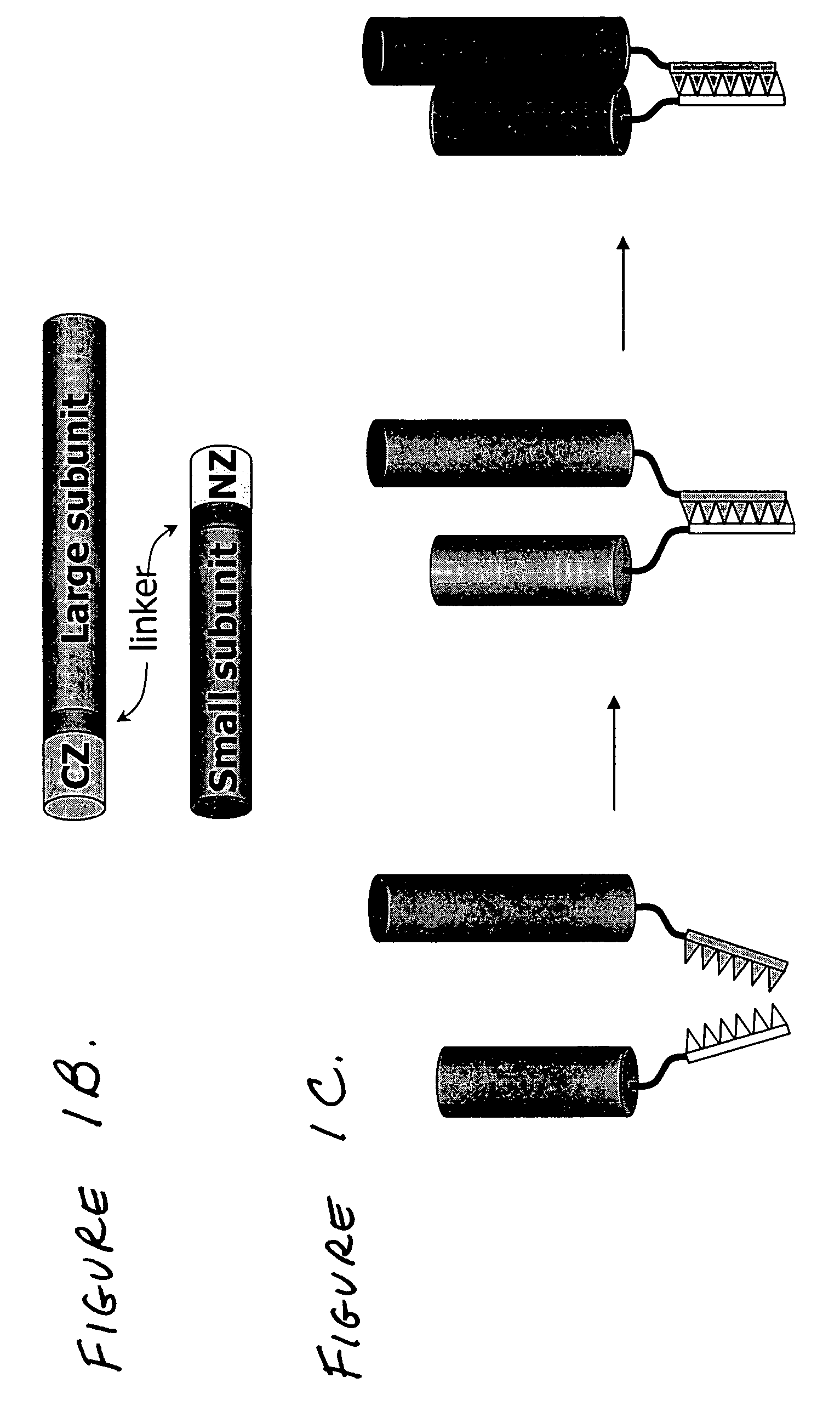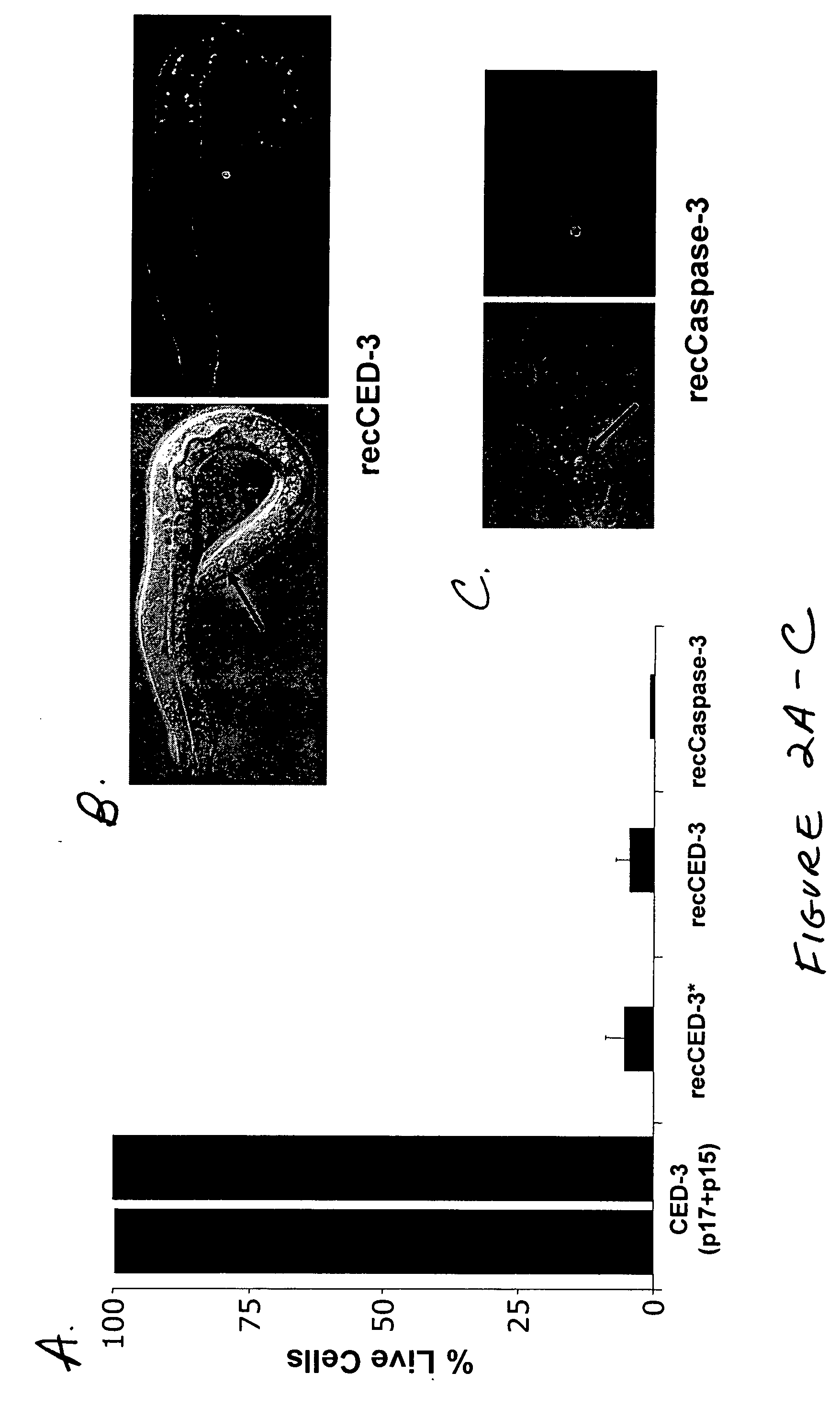Combinatorial expression of split caspase molecules
a technology of caspase and split caspase, applied in the field of conjugatorial expression of split caspase molecules, can solve the problems of achieving targeted cell death, cancer patients undergoing chemotherapy suffering temporary damage to their immune system, and the approach, while somewhat successful, is not without problems
- Summary
- Abstract
- Description
- Claims
- Application Information
AI Technical Summary
Benefits of technology
Problems solved by technology
Method used
Image
Examples
Embodiment Construction
[0029] For clarity, and not by way of limitation, the detailed description of the invention is divided into the following sections:
[0030] (i) caspases and their subunits;
[0031] (ii) binding partners;
[0032] (iii) caspase subunit-binding partner constructs;
[0033] (iv) uses of caspase subunit-binding partner constructs;
[0034] (v) caspase neutralizers; AND
[0035] (vi) caspase neutralizers as a “NOT” gate.
5.1 Caspases and their Subunits
[0036] Caspases in active form, following processing of the procaspase precursor, typically comprise a large (17-20 kDa) and a small (10-12 kDa) subunit. According to the present invention, each subunit, linked to a binding partner, may be expressed separately under the control of different promoters; each component (caspase subunit plus binding partner) is referred to herein as a “Sub-Casp-BP,” and the active product of their assembly is referred to as a “reconstituted caspase” or “recCaspase”. The following describes the structural characteristics...
PUM
| Property | Measurement | Unit |
|---|---|---|
| Cell death | aaaaa | aaaaa |
Abstract
Description
Claims
Application Information
 Login to View More
Login to View More - R&D
- Intellectual Property
- Life Sciences
- Materials
- Tech Scout
- Unparalleled Data Quality
- Higher Quality Content
- 60% Fewer Hallucinations
Browse by: Latest US Patents, China's latest patents, Technical Efficacy Thesaurus, Application Domain, Technology Topic, Popular Technical Reports.
© 2025 PatSnap. All rights reserved.Legal|Privacy policy|Modern Slavery Act Transparency Statement|Sitemap|About US| Contact US: help@patsnap.com



